This easy paleo pizza crust recipe is one I spent over a year perfecting. The gluten-free crust makes a perfect base to your favorite pizza, and happens to be yeast-free, dairy-free, grain-free, and paleo diet-friendly. Top it with all your favorite toppings for a dinner your entire family will enjoy.
I say this with caution, but I think I finally entered the “radical acceptance” stage of quarantine.
While I’m still trying to balance a full-time job, having a toddler home at all times, navigating a new home (and neighborhood!), all while running a website, there have been small moments of sanity. I invested in a Peloton, and my saintly coworkers don’t mind one bit when I go MIA on Slack to take a ride. (They actually encourage it.)
Also, my family likes pizza. Which is great because we’ve been eating, well, a lot of it.This pizza crust is so fast, so versatile, and so freezer friendly, so I probably make it for dinner about once a week (along with the chicken shawarma that is on constant rotation on my house!). And, spoiler alert: It’s not made from cauliflower. Even my pickier-than-ever 3-year-old loves this pizza.
How to Make the Best Gluten-Free Pizza Crust
To make your easy paleo pizza crust, you’ll need a large mixing bowl, parchment paper, a whisk or stand mixer, spatula, and a baking sheet, prepared pizza stone, or pizza pan.
Start by preheating your oven to 400 degrees. In a small bowl, mix together room temperature eggs, oil, and vinegar. In a large bowl, mix together your gluten-free flour mixture, made from over a cup almond flour, cassava flour, baking soda, and a fourth teaspoon salt.
Next, combine your wet and dry ingredients, then add water, a little at a time, until you achieve a slightly wet pizza dough consistency. Divide your pizza dough in half, gathering each half into a ball and placing each ball on its own piece of parchment paper. Using a rolling pin, roll out each ball, creating a pizza base roughly 10-12 inches in diameter. (For a thinner crust, roll it closer to 12 inches in diameter.)
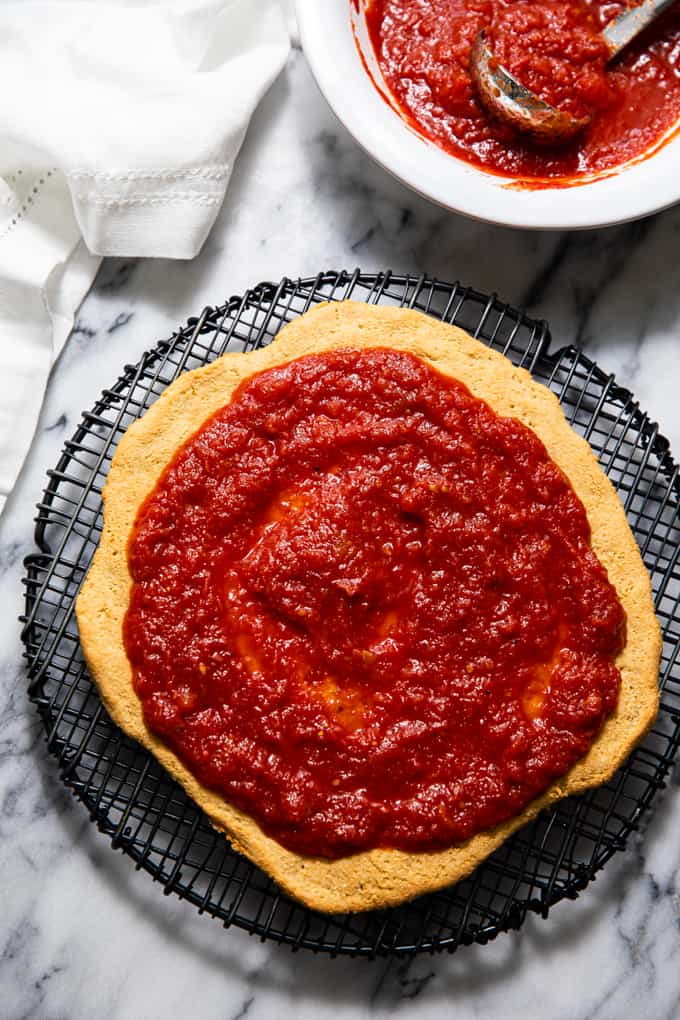
This and subsequent images by Quin Liburd
Transfer each pizza with the parchment paper to a baking sheet. Using your finger tips, gently roll the edges of the dough back onto itself to form a crust around the perimeter. If your fingers are sticking, lightly coat them with water, olive oil or coconut oil.
Bake your paleo pizza dough for 15 minutes in the preheated oven. After that, top with whatever pizza toppings you choose, such as pizza sauce, pesto, mozzarella, peppers, artichokes, veggies, red onions, or pepperoni. Return to the oven for an additional 15 minutes, this time at 450 degrees.
FAQs for the Best Paleo Pizza Crust Recipe: Tips for Recipe Success
If this is your first time making a gluten-free pizza dough, you may have a few questions. Hopefully, these tips and tricks make your pizza night a success:
- Can you use an all-purpose flour or a gluten-free flour blend in place of almond flour and cassava flour? No, I don’t recommend that you substitute flours here. When it comes to gluten-free baking, you cannot easily replace one flour with another, as each has different absorbency, which drastically affects the consistency of the dough (for example, brown rice flour — a common ingredient in gluten-free baking flours — absorbs moisture very differently than almond flour, tapioca starch, arrowroot flour, or coconut flour). Most commonly available gluten free all purpose flour blends (like King Arthur, Bob’s Red Mill, Trader Joe’s, and other brands) also contain xanthan gum, which will further complicate the consistency and is not often not tolerated well.
- Where can you purchase gluten-free flours? You can find gluten-free flours at most big box retailers, health food stores, and online on Amazon. I recommend Honeyville or Bob’s Red Mill brand almond flour (and other gluten-free flours), and Otto’s Naturals brand cassava flour.
- Does your water need to be a certain temperature? No, I have been using cool water from the tap. Room temperature or cool water is just fine. The reason many gf pizza recipes call for warm water is to proof the active dry yeast or instant yeast. Since this recipe is yeast-free, there is no reason to be concerned with water temperature.
- Can you add any seasoning or spices to the crust? If you add additional seasonings to the crust, try oregano, basil, garlic powder, or Italian seasoning mix.
- Can this recipe be made nut-free? No, not easily. Almond flour is a foundational ingredient of this recipe, so please do not attempt to replace it.
- Can this recipe be made vegan? You may be able to use a flax egg to make this recipe vegan, but I haven’t tried it.
- Is this pizza recipe yeast-free? Yes! This recipe does not use a yeast mixture, containing neither active dry yeast or instant yeast.
- Is this recipe dairy-free? Yes! There is no dairy in the dough. As long as you do not add any cheese as a topping, you will have a dairy-free pizza.
- How can you make a crispier or more chewy crust? For a crispier crust, leave the pizza in the oven longer when you par-bake the crust (i.e. 16–18 minutes). For a more doughy crust, similar to the texture of gluten free bread, use the full 1/2 cup of water, reduce the cassava flour to 1/2 cup + 2 tablespoons, and par-bake the crust for a shorter time (13–15 minutes).
- Can you use a pizza oven instead of a regular oven to cook this pizza? Yes, if you have one. Just be aware of the temperature difference. I would recommend simply double-checking your crust at 10 minutes to ensure the edges are not brown or overly crispy.
- Can you use this gluten-free recipe to make breadsticks? Theoretically, although I haven’t tried it. Check your breadsticks after 10 minutes in the oven, to ensure they’re not overdone.
- Is this recipe low-carb or keto? Yes! If you look at the nutrition facts below, you’ll see this gluten-free pizza crust recipe contains just 3 grams of carbs and 0 grams of sugar. It may not be keto.
- Can you substitute baking powder for baking soda? Unfortunately no, you cannot.
Enjoy This Gluten-Free Pizza Dough Recipe on Your Next Pizza Night
This yummy gluten-free pizza recipe is incredibly easy to prepare, and takes a total time of just 30 minutes in the oven. Made with almond flour, cassava, and eggs, it’s prepared with basic ingredients already found in your cupboards.
Top it with your favorite toppings for a cozy night in. Or enjoy last night‘s pizza as breakfast the following morning, topping with bacon bits, avocado, or a fried egg. If you still have leftovers (which is highly unlikely) this crust will keep in the fridge for up to three days.

Easy Paleo and Gluten-Free Pizza Crust
This easy paleo pizza crust recipe is one I spent over a year perfecting. The gluten-free crust makes a perfect base to your favorite pizza, and happens to be yeast-free, dairy-free, grain-free, and paleo diet-friendly. Top it with all your favorite toppings for a dinner your entire family will enjoy.
Ingredients
- 2 large eggs
- 2 Tablespoons olive oil
- 2 teaspoons white or apple cider vinegar
- 1 1/2 cups finely ground blanched almond flour
- 1 cup + 3 tablespoons cassava flour
- 1/2 teaspoon baking soda
- 1/4 teaspoon fine sea salt (or table salt)
- 1/2 cup water
Instructions
- Preheat the oven to 400 degrees F.
- In a large bowl, whisk together the eggs, oil, and vinegar. Set aside.
- In a medium bowl, whisk together the almond flour, cassava flour, baking soda, and salt.
- Add the dry ingredients to the wet and mix until it comes together. It will be crumbly.
- Mix in 1/3 cup of water. Then add remaining water, 1 tablespoon at a time, until the dough comes together in a sticky dough texture.
- Divide the dough into two halves.
- Gather one half into a ball, and place on a large (>12" square) piece of parchment paper. Top it with another piece of parchment paper.
- Roll out into a 10-12" circle.
- Roll or gently push the edges up and back on to the crust to form the raised edges. (There is no yeast in this dough, so the edges won't puff up like they do on a yeasted dough!).
- Carefully transfer the entire piece of parchment with the dough on it onto a large baking sheet.
- Repeat steps 6-9 with the other half of the dough, and place it on a second baking sheet.
- Bake for 15 minutes.
- Remove from the oven, and increase oven temperature to 450 degrees F.
- Top with toppings of choice, and bake directly on the oven rack (without the pan; put a piece of tinfoil on the rack below to avoid scorched cheese on the bottom of your oven!) for another 10-15 minutes until cheese, if using, is golden brown and bubbly.
- Remove from the oven and immediately transfer to a cooling rack, which allows the pizza to cool without getting soggy on the bottom.
- Once it has cooled slightly, slice and enjoy!
Notes
- You can substitute avocado oil for the olive oil if you prefer. Or you can replace the oil with water for a much breadier crust texture.
- Make sure you're using the spoon-and-level method to measure your flours.
- This recipe makes two small-ish crusts. If you only want one, you can make a half recipe, or freeze one of the crusts.
- If your fingers are sticking to the dough while you're rolling the edges back, lightly coat them with water, olive oil or coconut oil.
- Freezing instructions: cool the crust completely, wrap tightly in a layer of plastic wrap, then put it in a zip-top bag (it should fit in a gallon-size). Squeeze out excess air, close tightly and freeze until firm. Defrost in the refrigerator or countertop before topping and baking.
- Leftover pizza keeps in an airtight container in the fridge for up to three days.
Recommended Products
As an Amazon Associate and member of other affiliate programs, I earn from qualifying purchases.
Nutrition Information:
Yield: 8 Serving Size: 1Amount Per Serving: Calories: 140Total Fat: 12gSaturated Fat: 1gTrans Fat: 0gUnsaturated Fat: 10gCholesterol: 47mgSodium: 164mgCarbohydrates: 6gFiber: 2gSugar: 1gProtein: 5g
Nutrition information only covers the crust, without any toppings.
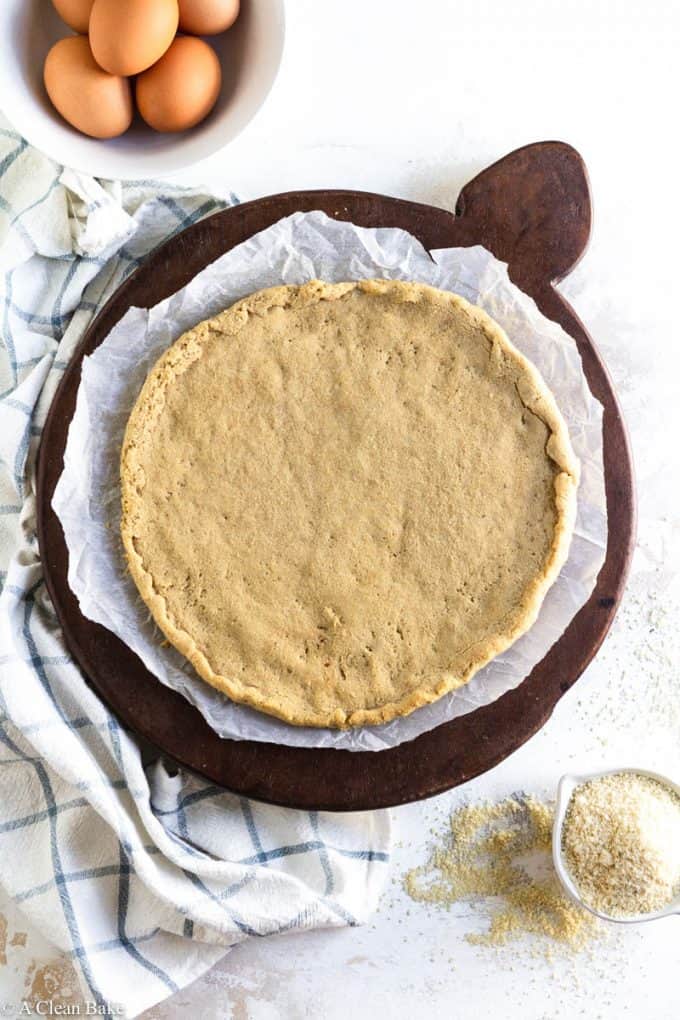
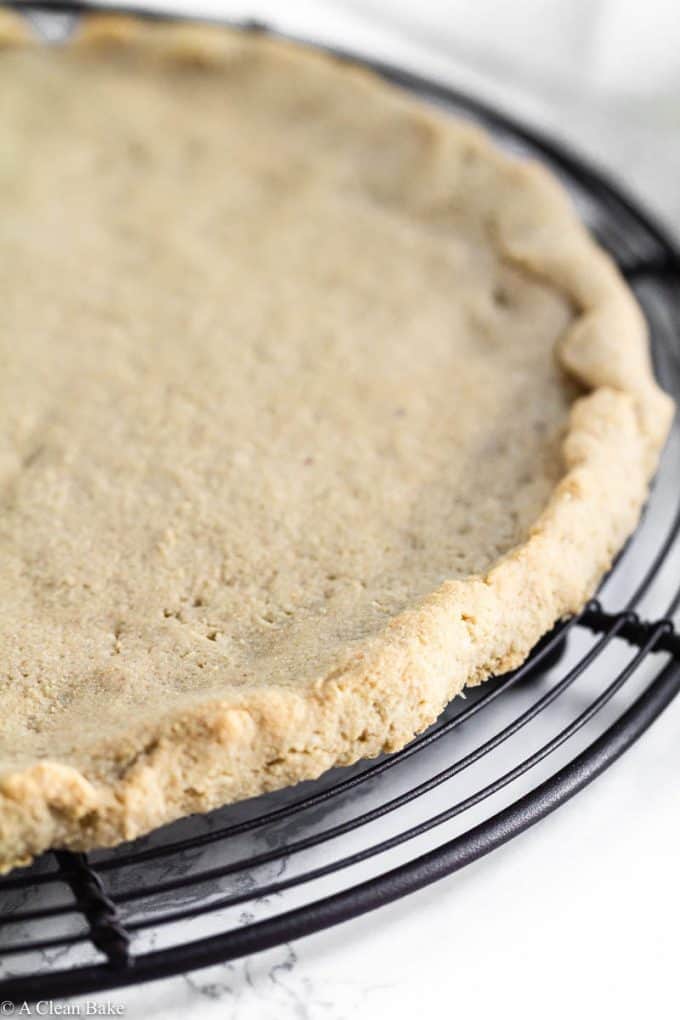
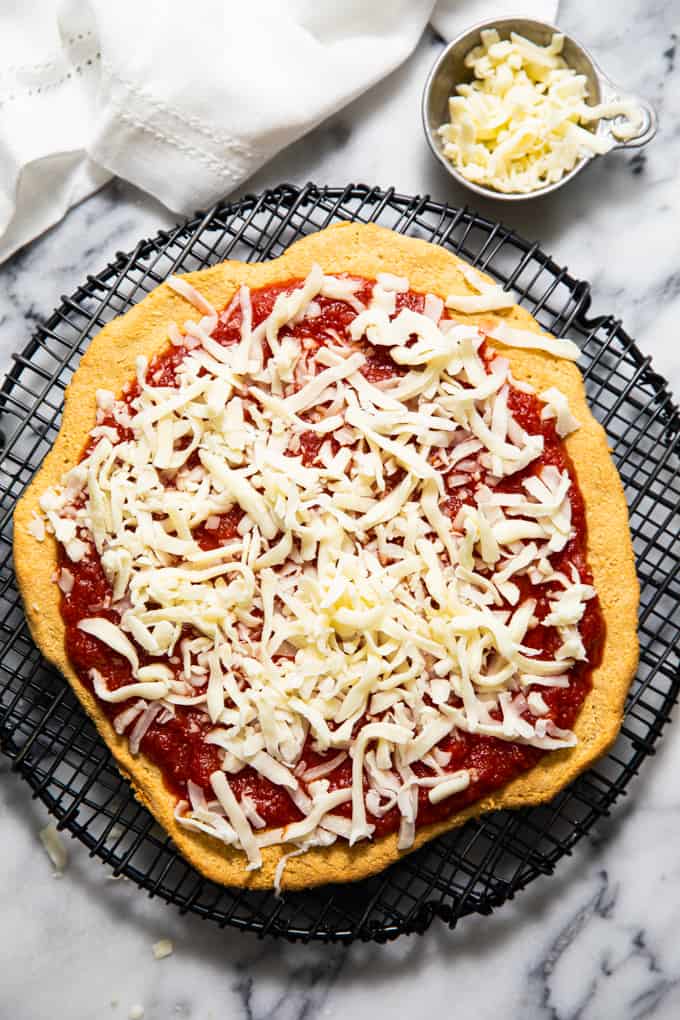
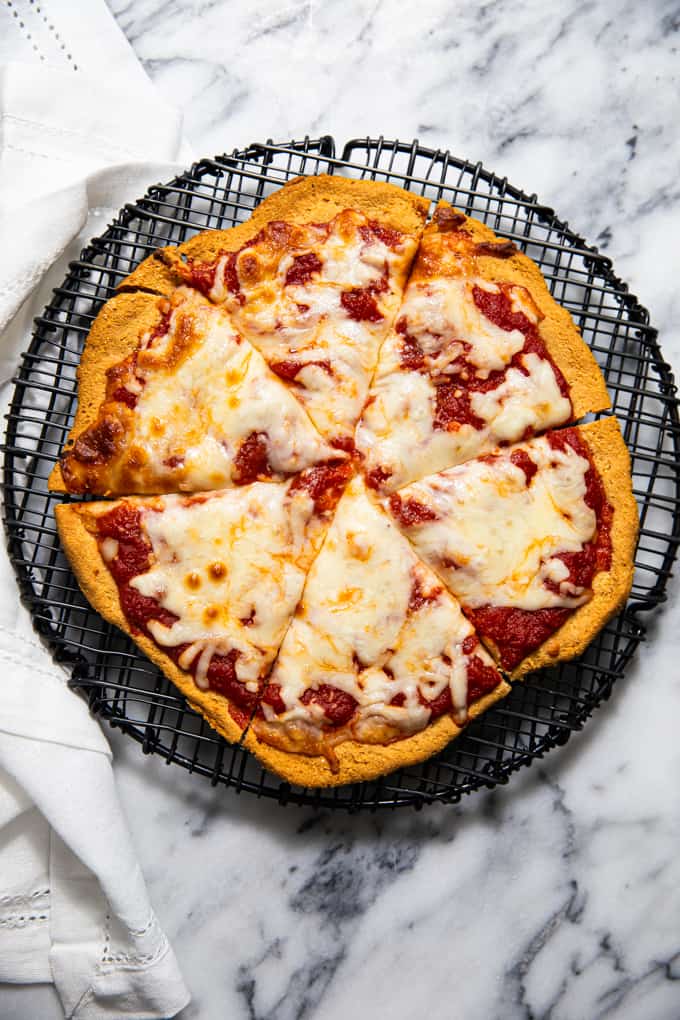


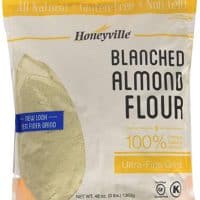
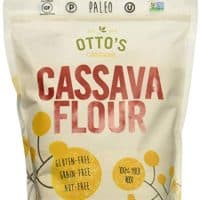
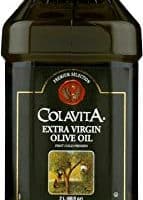
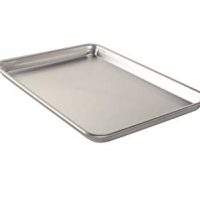
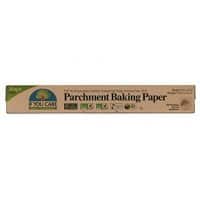
Mandy says
This pizza is delcious
Nora (A Clean Bake) says
Thank you!
Clarity says
Not a fan of this recipe unfortunately as I love cassava flour and almond flour. The combination and taste was not a satisfying consistency and it had an eggy flavor. I dont know if all cassava flour is very fine but the one I bought was and it did not create a dough like texture. Too bad.
Nora (A Clean Bake) says
It sounds like you may have under-measured the cassava flour if it didn’t turn into a dough (was it more like a batter?) Feel free to email me for troubleshooting: nora@acleanbake.com
Bella says
Is it possible to use just almond flour instead of cassava for this who can’t have starch? Thanks!
Nora (A Clean Bake) says
I wouldn’t recommend it. The texture won’t be as bread-like. Are all starches off limits?